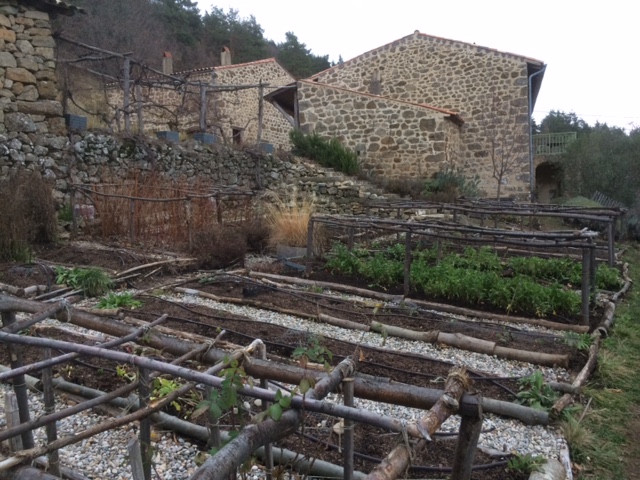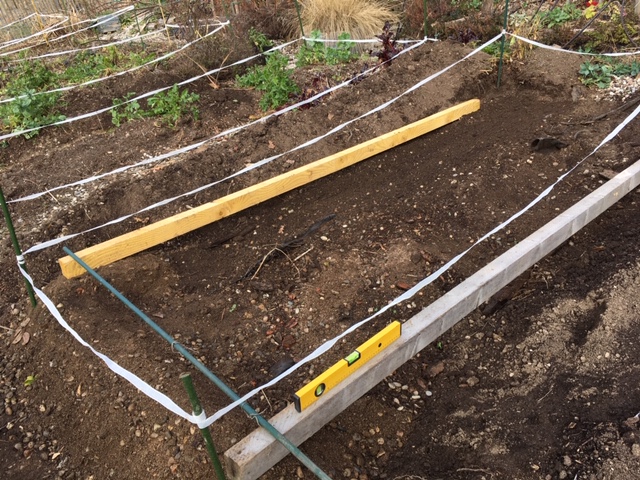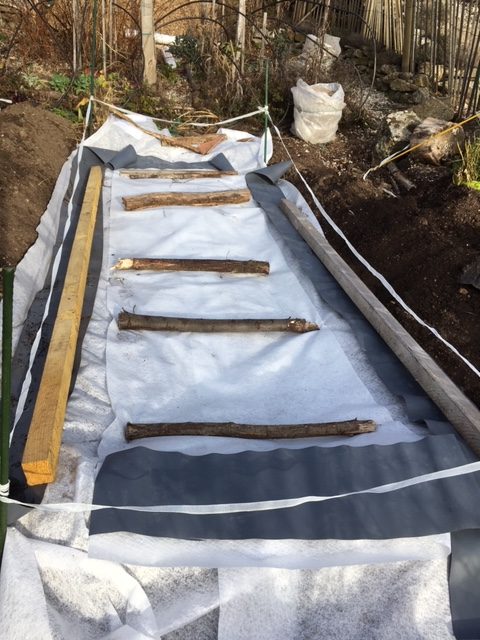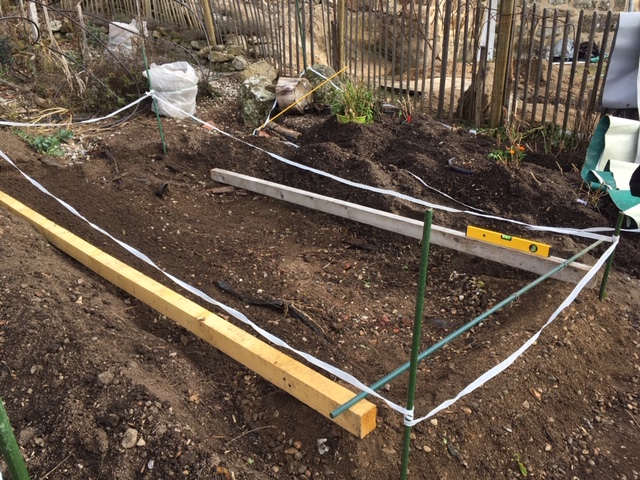Building permaculture beds #1
Alt + 3. Did you know how long it took me to find how to add a hashtag to this headline? No, you really don’t. But you can tell I’m not on Twitter. I had to Delve Deep. And along the way I found out how to create a French keyboard to my repertoire. So all was not lost. Apart from a lot of time.
And I don’t really want to use that symbol that leads to anything deeper or more profound. I just didn’t want to write ‘Part One’
But Part One it is today.
I had to prepare the first of my many, many new raised beds in the potager. The wood and labour for the deed arrives on Monday.

Goodness this is a messy shot. Sorry. I’m appalled by the state of my potager. Especially as by this time most years it’s a gorgeous delight of order.

Oh well. Omelettes and eggs. Omelettes and eggs. I do repeat that as a mantra every time I look on appalled.
And you might be looking at all this white stuff and wondering what on earth I am doing. A shroud for dahlias? A shroud for me?
No. Battling the bindweed in a new and interesting way. Everything is simple in the vegetable garden. You either want the vegetation that is coming up through the soil. Or you don’t.
And my tedious battles with bindweed this past year have inspired me to make changes. Big, scary, radical changes. But that’s landscaping. You unleash yourself before you have a chance to talk yourself out of it.
It is utter madness. What with the major building work going on just a few feet away. Sneak preview. The foundations have been poured.


And I have unleashed a really, really ambitious plan which is to have my raised beds vaguely horizontal. Like most well-positioned vegetable gardens, this one is on a gentle slope.
Which is fine. But it can be irksome when you yearn for an even look across the garden. I don’t have to worry about slowly draining vegetable beds as this is the most free-draining soil you could ever imagine.
So enter an afternoon of landscaping with a spirit level. Trying my level best (sorry!) to get the bed into the right shape before I could lay the fabric.
This is geotextile. A fabric that allows water to drain through but hopefully not bindweed roots. It’s not perfect. Nothing is. And it’s way better than that ghastly black stuff which won’t let water flow through. I will use that to line the wooden raised beds, but for the base it has to be permeable.
It will do for a few years and it is a great price if you buy a stonking fat roll. It works out at about one euro per metre. Pause while I switch keyboards… €1 (Alt +2).

So once I had the level it was down with a double thickness of the geotextile (géotextile – yes, yes, we are all finding this tahsome) as I’m not going to quibble over a few euros of fabric if it means the voracious bindweed roots are slowed.
The grey roll of thick rubber is a leftover from the pool liner construction. I’m belt and braces for the very edges of the new wooden beds. But I don’t have enough of the lovely stuff to do the edges of all six beds that I want to make this later winter and spring.
Alas, I can only do one bed’s prep at the time as I have all the soil piled up beside the next bed. It is in the way. When you are trying to transform an area 15 metres by 10, you learn, rather quickly, that soil is not going to be shifted far.

It’s a start. A small start.

18th January 2020 @ 10:00 pm
Lindy, you continually amaze us with your initiative, imagination , drive, energy, resourcefulness and capacity for such hard physical work.
I love reading your entertaining accounts of the above and am astounded that you have energy left to write about it as well.
Go you Wonderwoman! !!!!!!!
19th January 2020 @ 7:27 am
Wonderwoman…. er no! I’m such an old crock first thing in the morning. But thank you very much for your effusive comments. You know what it is like to have a passion to create. And to share your passion with others. I am very pleased I have kept up the website and the blog. That is the only way I can look back and say ‘oh, so that’s what it looked like before I attacked!’. xxx
19th January 2020 @ 9:57 am
I sympathize with your keyboard troubles… I learnt to type on a UK keyboard and more than 20 years later, after typing thousands of French words daily (I’m a translator) I had to switch to a French one. Traumatic. The codes you mention are totally alien to me. Do you use Apple by any chance?
But on to the more important raised beds. So you have bindweed too… It seems to conquer everything. I sometimes despair. I will be very interested to see how well the géotextile works. But how deep will the final beds be? Will the vegetable roots have enough soil depth? And one last question – is it raspberry canes I can see in one of your beds, and if so, do you find it works well to grow them that way? Sorry to ask so many questions, and good luck with part 2.
25th January 2020 @ 5:53 pm
Hi Christine, so many questions! Hopefully you will get the answers as I build the beds. But they are high – 70cm. So vegetable roots have plenty of room. (Yes I use Apple; I was a PC gal until a year ago when I switched.)
The raspberry canes are absurdly successful and a complete pest. If they are happy as you know, they will conquer the entire space. I can’t wait to sort them. But for now that is definitely part two fo the potager project. I need to build the first six beds first.